Dalai Lama Mandala
Best Five Books Written By The Dalai Lama on Buddhism
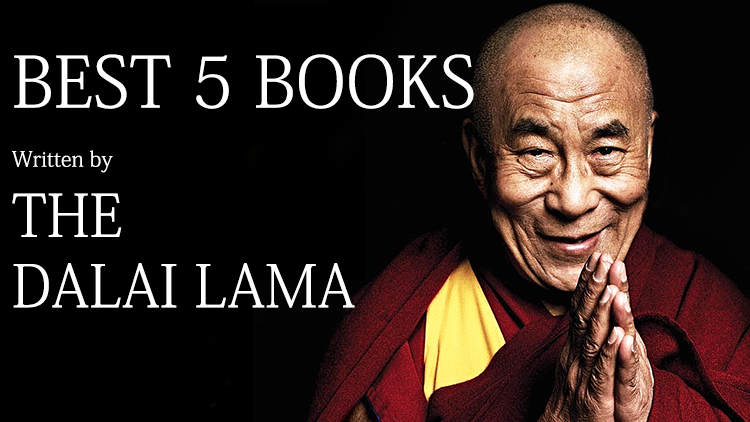
Most people living in Asia are knowledgeable of the most important principles of Buddhist doctrine. Many visitors of our website are very fascinated by our works of art and quite often we receive messages from people asking about the meaning behind symbols and sometimes it’s difficult for us to provide a simple answer.
Buddhism is a very complex system of belief that focuses on personal spiritual development. His Holiness the Dalai Lama is undoubtedly the “authority” on the matter and his books offer a clear vision of the Buddhist path.
The mission of the Dalai Lama as bodhisattva focuses on helping human beings to achieve enlightenment and as author he wrote dozens of books aimed to reach his goal.
We selected the best 5 books written by the Dalai Lama aimed to people that are interested in learning Buddhism.
Approaching the Buddhist Path
This book is the first of a trilogy where His Holiness illustrates and explain every step of the path to enlightenment, compiled and coauthored the American Buddhist nun Thubten Chodron.
This first volume provides basic notions on Buddhist history and offers an ample introduction to the fundamentals of Buddhism accompanied by the Dalai Lama’s own personal experiences. To purchase the book click on the cover.
The Foundation of Buddhist Practice
In this second book his book the Dalai Lama explain the key teachings to start the practice of the Dharma. The book offers a simple description on how to structure a meditation session, the appropriate relationship between the spiritual mentor and the student and a series of chapters on the low of Karma and the concepts of death and birth. To purchase the book click on the cover.
Samsara, Nirvana, and Buddha Nature
Samsara, Nirvana, and Buddha Nature is the third volume of the trilogy. In this book the Dalai Lama and Thubten Chodron give relevant information about the four noble truths. The reader will learn how to improve the personal practice with insightful and easy to apply methods. about the mind’s infinite potential through to the teachings of Dzogchen. To purchase the book click on the cover.
The Art of Happiness
This book is considered a classic and the cornerstone of the field of positive psychology. The Dalai Lama here addresses many issues that we all face in daily life. The desires, the angers and ignorance which prevent us from realizing goodness and happiness. He offers the point of view of a simple Buddhist monks on these issues and teach us how to ease our path to happiness. In this book His Holiness proves his amazing ability to say things that are both simple and profound, and touches everyone. To purchase the book click on the cover.
My Spiritual Journey
This book is composed mainly of three parts; The Dalai Lama as a Human Being, the Dalai Lama as a Buddhist monk, and The Dalai Lama as the Dalai Lama. It consists of excerpts from speeches, interviews, and other books of the Dalai Lama over the years. It is considered the most intimate book of His Holiness and close enough to be considered an autobiography of the spiritual leader. To purchase the book click on the cover.
It is known how Buddhism doesn’t have one holy book only, as many other religions. Several authors and scholars trough history contributed to a vaste library exploring many concepts that can be hard to grasp.
With his books the Dalai Lama makes things simple for us. His examination is eloquent and comprehensive, and lovingly invites each of us to learn a little about Buddhism – and about ourselves.
Happy reading.
The Sacred Symbolism Of The Kalachakra Mandala
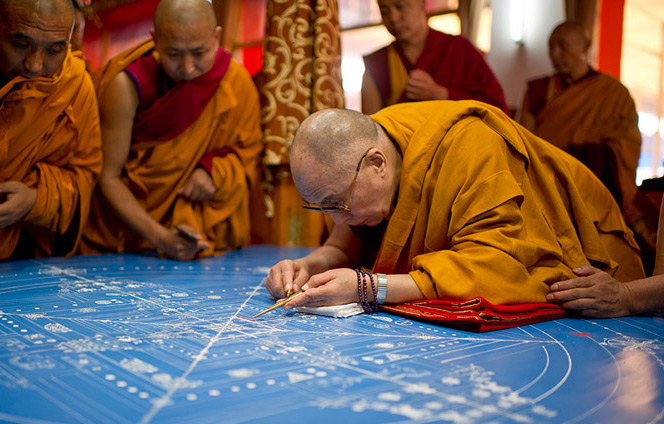
His Holiness the Dalai Lama composing a Kalachakra Mandala during a ritual.
The Kalachakra mandala is definitely one of the most eye-catching thangka painting and appreciated for the symbolic elements that compose it and the visual representation of important teachings of traditional Tibetan Buddhism.
However, as explained by His Holiness the Dalai Lama, many mistaken interpretations have circulated among people who viewed the Kalachakra mandala simply as a work of art.
The Kalacakra tantra is considered the most advanced practice of Vajrayana tradition. This complex system of teachings was originated in India and incorporated into Tibetan Buddhist tradition.
The Dalai Lama himself attends to a series of rituals called “Kalachakra empowerment initiation” and the creation of the Kalachakra mandala is used as a visual textbook for Buddhist practitioners.
The Kalacakra initiation is based on the concepts of time (kala) and cycles (chakra) and, before approaching these rituals, the disciple should have acquired knowledge of the three principal aspects of the Mahayana doctrine: Samsara, Bodhichitta and emptiness.
In this article we will not examine in depth the philosophical aspects of the Tantric initiation but we will focus on explaining the significance of the symbols depicted in the mandala.
First of all it is important to know how to display the Kalachakra mandala correctly. Notice the four different colors of the main inner elements (red, yellow/orange, white and black). The mandala must be oriented with the black side facing down.
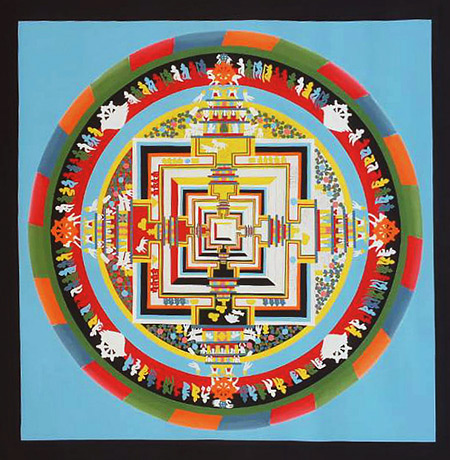
The outer ring is called wisdom circle or protective ring. It is decorated with golden flames and the combination of these colors create a rainbow that symbolize the five aspects of the primordial wisdom and the five Dhyani Buddhas.
After the space ring there are four inner rings representing the four main elements: air, fire, water, and earth.
The central part of the mandala had 3 distinct inner layers called body, speech and mind mandalas.
The geometric structure is the projection of a majestic palace with four gates and five floors.
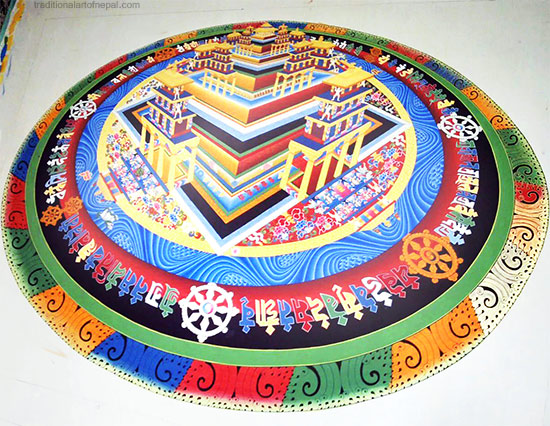
Inside the Body Mandala are represented with syllables and symbols a total of 536 deities. Twelve animals are depicted inside the main gates and protecting the outer walls, representing the months of the year.
The Body Mandala surrounds the Speech Mandala that has the same geometry and inside of which are represented 36 offering goddesses and 80 Yoginis.
The most inner part is called the mind Mandala that occupy the last three floors of the palace and homes 80 deities.
The lotus flower at the center is the symbol of the Buddha mind.
There are several design of thangka paintings of the Kalachakra mandala. In the most complex artworks two deities are depicted in the center of the mandala instead of the lotus flower.
These important deities are Kalachakra and Vishvamata depicted in Yab-Yum: the divine Tantric union that symbolize the cyclic nature of time. This is why the Kalachakra Mandala is also called the “time wheel”.
The Kalachakra Mandala is also represented with one of the most important and well known symbol of the Tibetan Tantric tradition: the Sanskrit seed syllables of the Kalachakra system known as “the mighty ten stacked syllables”.
Each syllable that compose the mantra has a different color and they are represented all interconnected on top of a lotus flower and surrounded by a ring of fire.
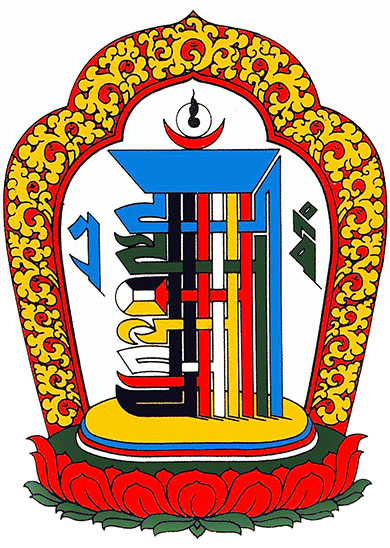
To meditate on the mandala and recite the Kalachakra mantra bring peace of mind and benefits for all sentient beings.
The powerful Kalachakra mantra is spelled: Om Ham Ksha Ma La Va Ra Ya Sva Ha.
Namaste.
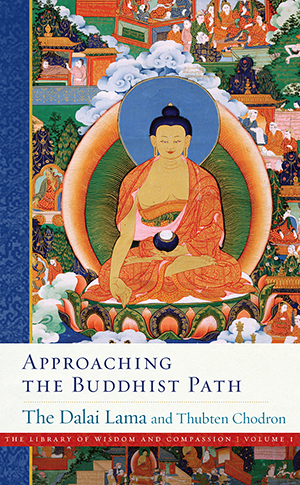
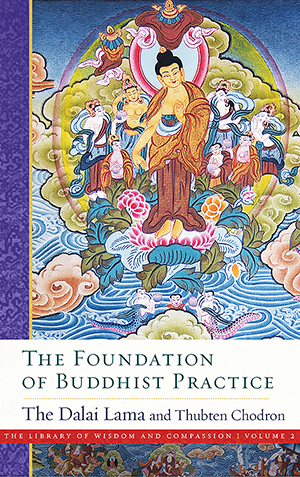
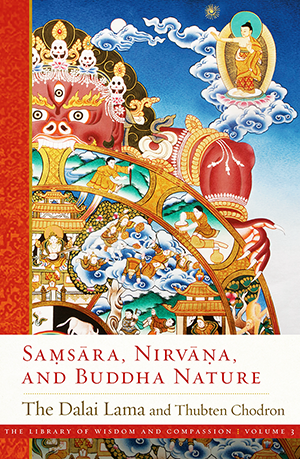
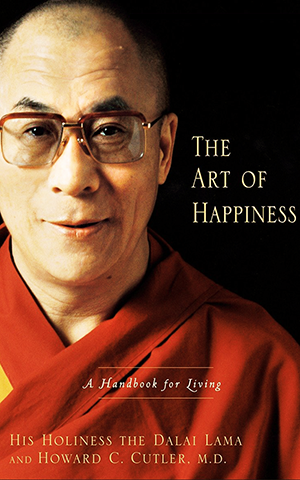
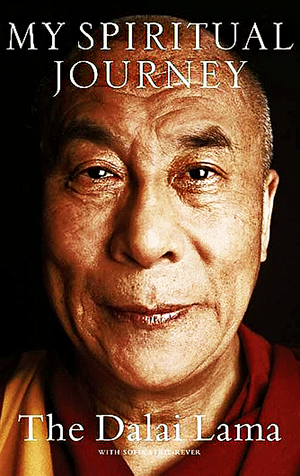
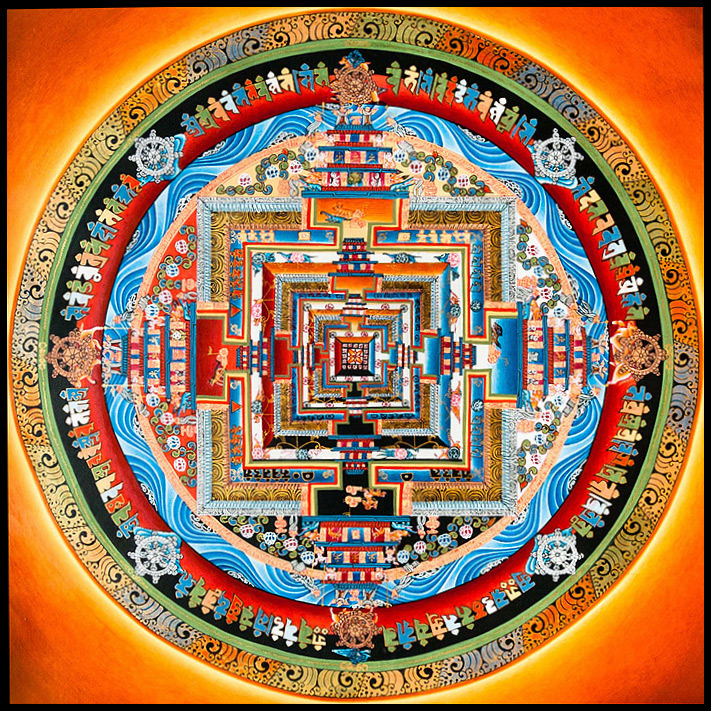
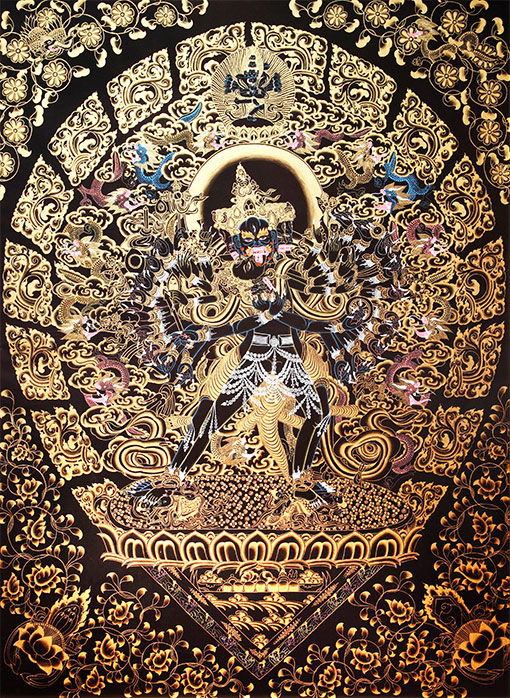
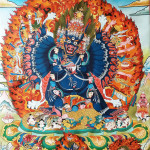 Vajrabhairava
Vajrabhairava 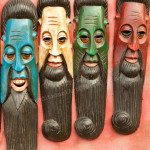 Sadhu Baba Masks
Sadhu Baba Masks 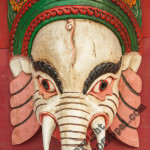 Ganesh Mask Design #02
Ganesh Mask Design #02 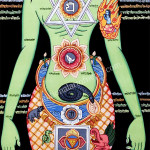 Chakraman Yogi
Chakraman Yogi 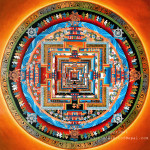 Kalachakra Mandala
Kalachakra Mandala 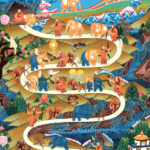 Samatha Meditation Thangka
Samatha Meditation Thangka 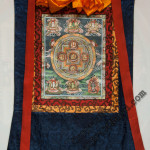 Silk Frame #02
Silk Frame #02 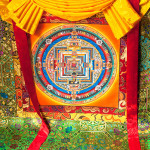 Modern Design Brocades
Modern Design Brocades 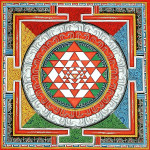 Sri Yantra Mandala
Sri Yantra Mandala 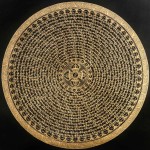 Yin Yang Mantra Mandala
Yin Yang Mantra Mandala 





